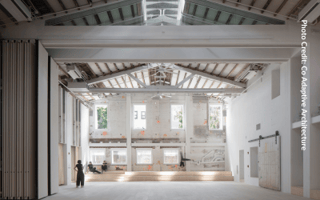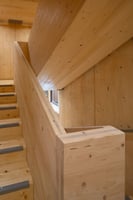“Cross-laminated timber (CLT) has the potential to reset the discipline of architecture.” This...
Unlocking Construction Efficiency with Digital Fabrication for Wood Buildings
Digital fabrication approaches that leverage Building Information Modeling (BIM) and Computer Numerical Control (CNC) machining have revolutionized the way architects, engineers, and builders approach wood construction. These tools are reshaping the industry, making wood-based building systems more efficient, precise, and adaptable.
Prefabricated wood buildings, now enhanced by advanced BIM workflows, can significantly accelerate the construction process. Architects are leveraging BIM to model every detail of a structure before it ever reaches the site, ensuring that all components fit together seamlessly. By identifying and resolving potential issues during the design phase, BIM minimizes costly changes during construction. This allows teams to deliver projects faster and with fewer errors and less waste. In fact, off-site prefabrication enabled by BIM can reduce material waste by 20 to 40 percent, which is further discussed in the continuing-education course The Business Case for Building with Wood.
CNC provides additional advantages
CNC technology takes this efficiency a step further by automating the fabrication of wood components. Using CNC machines, manufacturers can precisely cut wood columns, beams, and panels to size, incorporating openings, MEP service channels, and connection details with millimeter accuracy. The ability to use CNC machining for wood components means you can achieve tighter tolerances, ensuring each piece fits together perfectly on site. This precision reduces onsite labor, shortens the installation phase, and improves overall project quality.
Coupling 3D modeling with BIM and CNC technology transforms wood into a cutting-edge building material that can outperform other structural materials when it comes to speed, cost-efficiency, and adaptability. Prefabricated timber systems, built with digital precision, can be shipped directly from the factory to the site, ready for quick assembly.
Case study: Sideyard
“Certainly process-wise, it’s a very different game to do the bulk of the work upfront and then rely on that precision to come together quickly in the construction process,” explains Key Development's Chief Operations Officer, Claudia Munk-von Flotow. The developer completed the 20,000-square-foot mixed-use project, Sideyard, in Portland, OR, using prefabricated CLT and glulam systems. “Besides the environmental and performance advantages over steel and concrete, there is also a positive domino effect with a reduced construction schedule.” The Sideyard project is explored in depth in the AIA-accredited course Designing Sustainable Prefabricated Wood Buildings, which delves into real-world case studies and explores the full potential of digital fabrication combined with wood systems.
In design and construction, speed and efficiency are paramount. Understanding the role of digital fabrication in wood construction is crucial for architects, engineers, and builders looking to minimize costs and schedules while delivering projects constructed with natural, lower-carbon materials.


